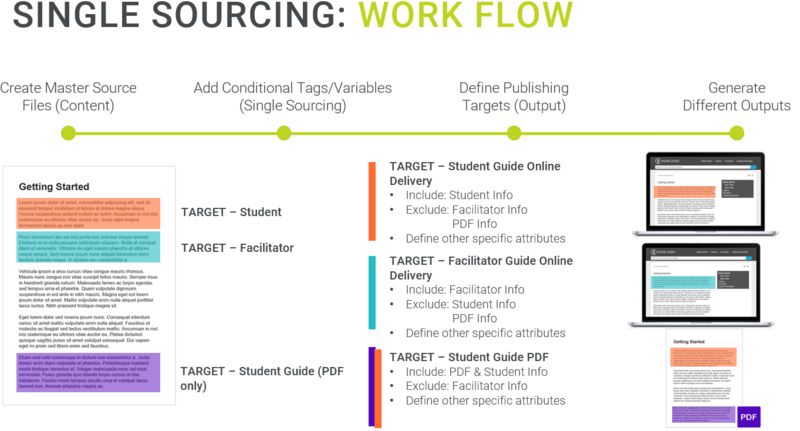Professional Partner Content
Develop Your Course Material With Ease Using a Customizable Instructional Design Template
Published Fri Feb 21 2020
Developing detailed course material for any training course or training program takes time and effort. Not only are you writing the curriculum and exercises, but you you're creating two separate versions of the course guide: one for the instructor and one for the student. What if there were a way to create these two deliverables from one source?
Good news—there's a solution. A growing number of instructional designers are relying on content reuse and single-sourcing capabilities to author and publish content.

How Single Sourcing Saves You Time
So what is single sourcing? Let’s break it down with an example. Single sourcing means that if you have a version of a procedure for Target A (student), a special version of the procedure for Target B (facilitator), and another variation for Target C (student guide in another format), you’re not going to have three versions in different places to maintain. Instead, the best practice is to put all your content into one procedure and maintain it as a single document. Using conditions, you would then publish multiple unique outputs that include or exclude content. You can also easily reuse content within the document, such as a note, warning, table, or stepped procedure in other documents.
Looking Beyond Linear Word Documents
Using a software solution such as MadCap Flare, which organizes content into topics rather than into a single linear document, you can easily adapt a single sourcing workflow for your training content and start maximizing content reuse without any programming knowledge.
To help you get started, we have created a prebuilt and professionally designed project template ready to implement and easy to customize. Once you create a new project from a template, you can add your own content and company logo(s) and replace the default colors using your company brand guidelines to ensure consistency across your brand interactions.
This template includes preformatted page layouts and starter topics as well as customizable elements such as note boxes and tables that come in two separate outputs. The built-in outputs can be easily configured so that content specific to the instructor does not show up in the student manual. The best part is that all of that content can be easily reused and customized for other departments or companies without any content duplication.
Instructions about how to download the instructional design template can be found here.
You've Reached ATD Member-only Content
Become an ATD member to continue
Already a member?Sign In

